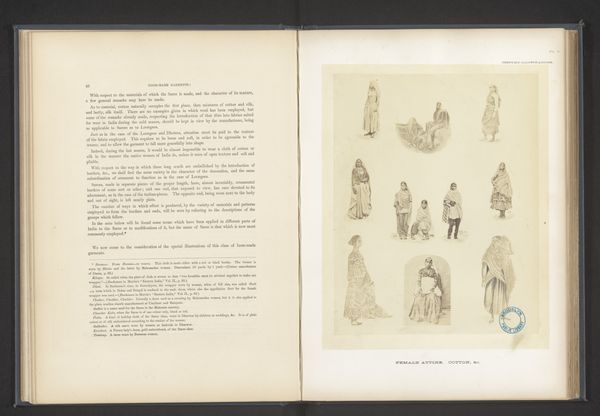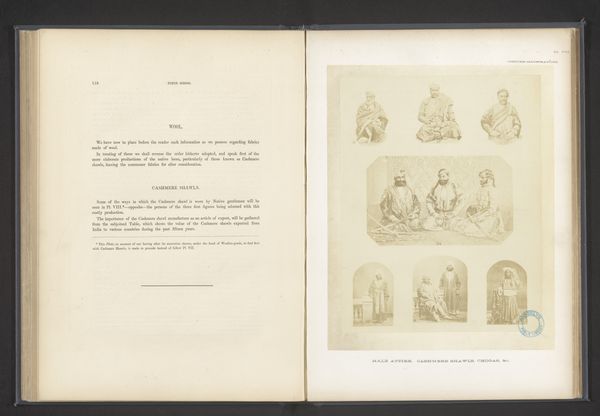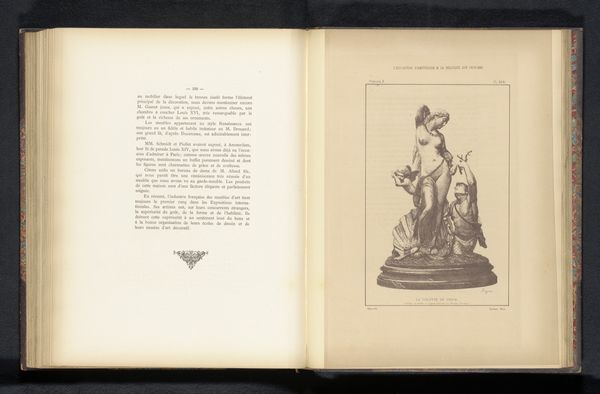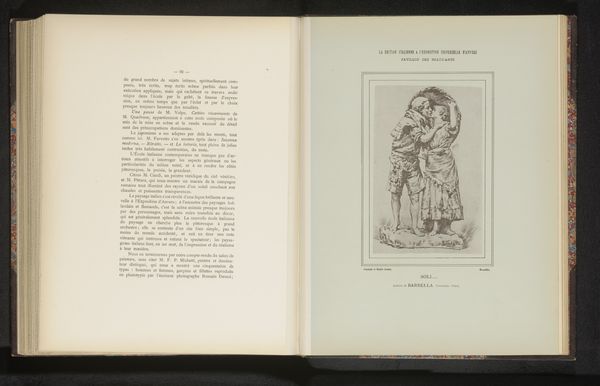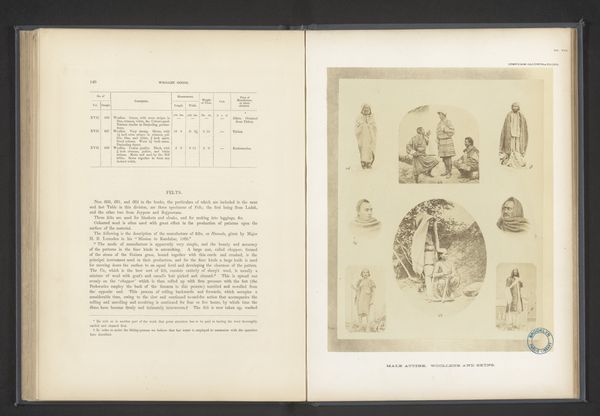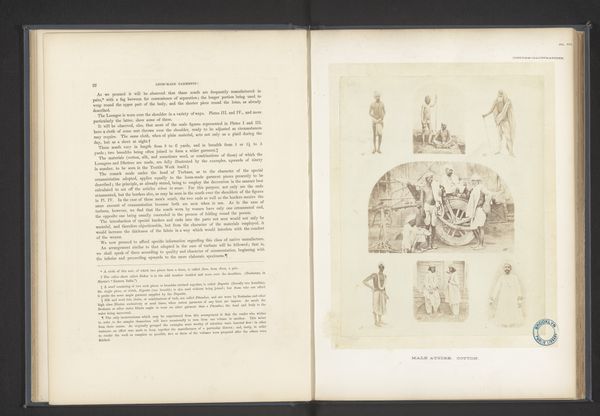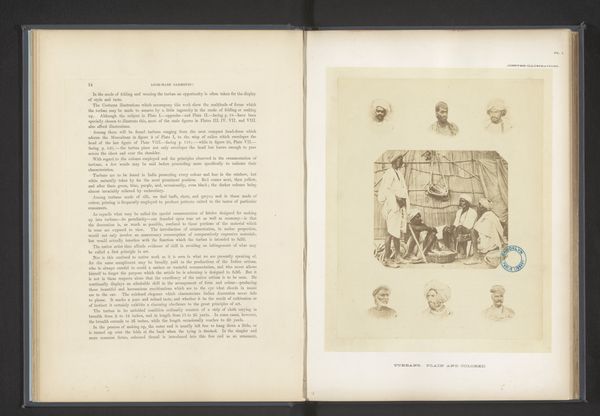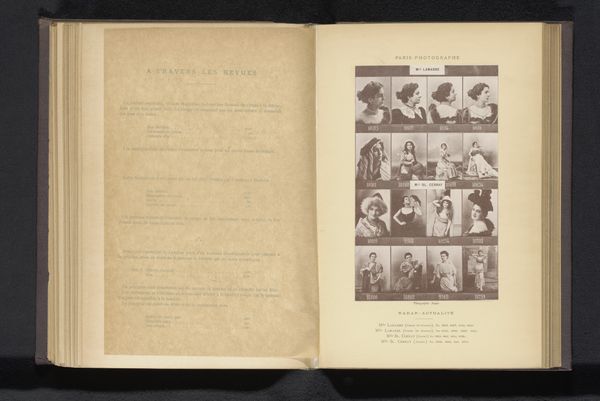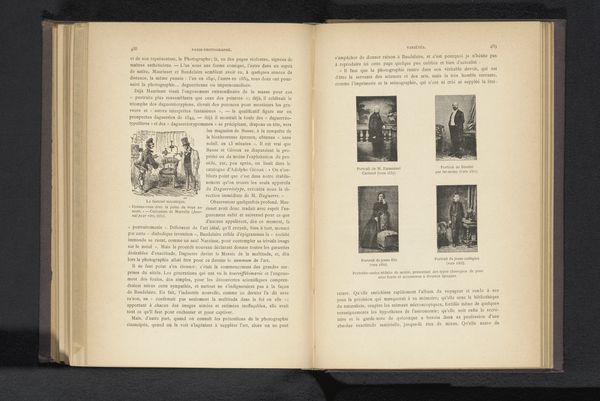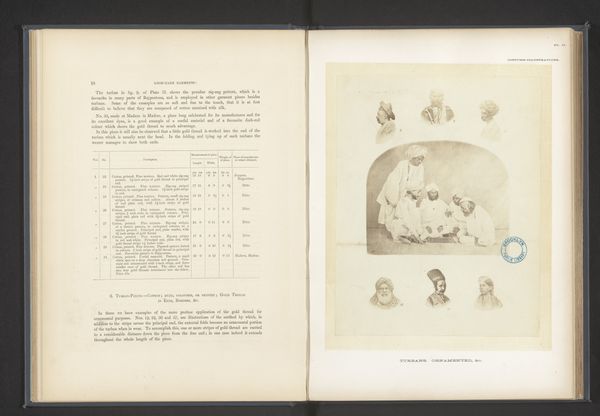
Verzameling portretten van Indiase vrouwen ter illustratie van verschillende vrouwenkleding before 1866
0:00
0:00
print, photography
#
portrait
# print
#
asian-art
#
photography
#
orientalism
Dimensions: height 258 mm, width 204 mm
Copyright: Rijks Museum: Open Domain
Curator: Editor: This is a print titled "Verzameling portretten van Indiase vrouwen ter illustratie van verschillende vrouwenkleding," created before 1866 by an anonymous artist. It seems to present various photographs arranged almost like a catalog. What strikes me is how staged the portraits feel, yet they still hint at something intimate. What's your interpretation? Curator: The power of an image like this lies in what it reveals, consciously or not, about the culture that produced it. Consider how the sitters are posed, the details emphasized, and what is left out. Don't you find the artist uses portraiture, and even perhaps Orientalism, to convey the symbolism in women's clothing during this era? Editor: Definitely. It’s almost anthropological, like a study of types. The women are presented more as representations of clothing styles rather than as individuals. Is there more that this photo says, even unconsciously, about its original cultural moment? Curator: Precisely. Think about what it meant to catalogue people in this way. What visual language is being used and for what purposes? Consider this photograph as more than a neutral document of style, it's laden with meaning about identity, status, and how the West perceived the East, perhaps preserving aspects of those lost traditions. How does that change how you view it? Editor: I see it now - it’s a captured moment of how different cultures were viewed and understood… or, perhaps, misunderstood. This reminds me that the clothing here carries so much identity and cultural narrative. Curator: Absolutely. Visual artifacts such as this hold within them a silent story of human experience and, sometimes, cultural appropriation. It provides clues about what has vanished and helps us preserve shared culture for a wider understanding.
Comments
No comments
Be the first to comment and join the conversation on the ultimate creative platform.
